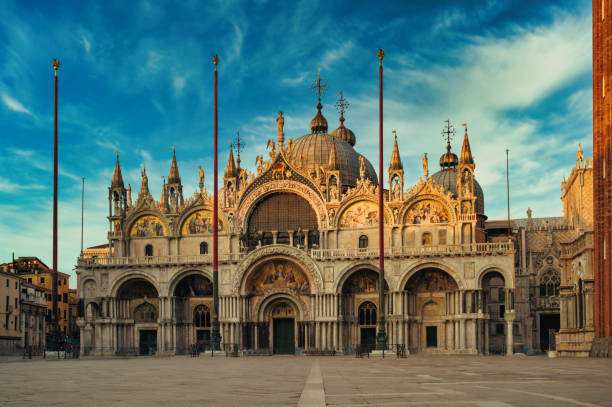We had one rehearsal, and I went out for lunch with my string player friends before the concert. From their perspective, this was the most amazingly precise big band they had ever heard, much less performed alongside! They were quite amazed and rather impressed that we sounded like a seasoned road band after one rehearsal..
From the perspective of someone familiar with the Miami music scene, the Big Band roster read like an All-Star, Fantasy Line-up from across the many amazing decades of the University of Miami Concert Jazz Band-(The CJB)!

An American Orchestra is really a Big Band, often comprised of 3 to 5 each of trumpets, trombones and saxophones plus a rhythm section of one each-piano, bass, drums and often guitar. In a Pops Orchestra (arguably American as well),, European strings such as violins, violas, ‘celli and basses are added to sweeten the sound, broaden the emotional palette and increase the potential listenership and sales. In a traditional Orchestra or Symphony Orchestra (European), the strings are most numerous and often do the heavy-lifting and play most of the notes. In a Pops Orchestra it is the Big Band that drives the sound which is deepened and colored by the strings.
Barry Gibb is one of the greatest songwriters of all time. Implicit in his tribute to Sinatra was not only Sinatra’s great singing, but Sinatra’s great songs, great arrangements and great side musicians as well. Few other living musicians could pull off all four of these with confidence like Barry Gibb. Fewer singers yet could add to this the great sense of extended phrasing for which Frank Sinatra was so famous along with Sinatra’s uplifting swing and amazing rhythmic feel! At the passing of this most legendary Jazz Baritone of the 20th Century, Frank Sinatra, DOZENS of famous singers recognized their debt to him and sought to honor him in song. One after another, there seemed to be more failures than successes, underscoring the greatness of what Sinatra had spent a lifetime to achieve, perfect and popularize.
23 January 1999 at The Fontainebleu Hotel, Miami Beach, Florida
Barry Gibb Sings Sinatra, Part I
Barry Gibb produced this incredible, live, one-take concert and sought to sound like himself singing Sinatra songs, rather than to sound like Sinatra. A true original, Gibb incorporated great charts and sidemen, but seemed to perceive that the true essence of Sinatra was not only his voice, but what he did with it! By imitating the phrasing Sinatra derived from Tommy Dorsey as well as Sinatra’s unique rhythmic style, Barry Gibb made the most credible and original contemporaneous Sinatra tribute I have heard. And without previous forays into Jazz!!, despite his great crossover successes in Pop, Rock, Folk and Country Music.
Sinatra chose great songs and had the BEST arrangers. Barry Gibb’s tribute to him achieved nothing less! By starting out with masterpieces from the American Song Book and using superb arrangements and excellent treatments of them, the evening was a memorable delight! “Welcome to my dream come true“, commented Gibb, “I’ve wanted to do this my whole life!”
1) “I Get A Kick Out of You”, I-0:04 to 2:08
2)”Come fly With Me”, I-2:16 to 5:00
3) “Without A Song” I-6:05 to 8:14
4) “I’ve Got You Under My Skin” I-8:24 to 11:23
5) “It Was A Very Good Year” /”Young At Heart” I-11:53 to 18:42
1:226) “I’ve Got You Under My Skin” I-19:00 to 21:22
7) “Nancy With the Laughing Face” I-23:04 to 25:26
8) “That’s Life” I-25:32 to 28:40
9) “Don’t You Worry About Me” I-30:26 to 32:27
10) “That’s Why the Lady Is A Tramp” I- 32:32 to END, PARTIAL
Barry Gibb Sings Sinatra, Part II
11) “Witchcraft”. II-0:00 to 2:22
12) “I Did It My Way”. II-2:32 to 7:20
My Way, Playoff 7:24 to 8:44
13) “New York, New York!” II-8:59 to 12:10
NY NY, Playoff 12:13 to 12:56
14) “Mack The Knife”. II-14:07 to 18:32
Mack, Playoff 18:34 to END 19:26

One can feel the importance of family and friendship in the rich tapestry of Gibb’s life which is evident for this fundraiser performance for the Kidney Foundation. Countless acts of kindness and generosity throughout South Florida and beyond are hallmarks of these adopted Miamians. Humbly presented with true love and appreciation, this concert seems to genuinely reflect Barry Gibb’s life-long love for Francis Albert Sinatra and his music.
Personnel, best available estimations-SUBJECT TO CHANGE! In Progress…
Trumpets: 1st (Jeff Kievit); 2nd Chris LaBarbera; 3rd (Billy Spencer) 4th (Steve Smith).
Trombones: 1st-Dana Teboe; 2nd-Dante Luciani; 3rd (Tom Norwood); Bass-David Brubeck
Saxophones/Woodwinds 1st Alto/Oboe (Neal Bonsanti); 2nd Alto/Clarinet Gary Lindsay; 1st Tenor Eddie Calle; 2nd Tenor-(Gary Keller/Billy Ross) ; Bari-Mike Brignola
Rhythm Section: Piano-Ben Sillvers ; Bass-Matt Bonelli; Drums-Steve Rucker; Guitar-Alan Kendall
Violins
Violas (Dana Patterson), Debbie Spring, Larisse Buckton
‘Celli: Steve Sigurdson,
Basses:
Harp:
c. 2024 David William Brubeck All Rights reserved
I wonder if AI could go in and grab each missing part from this video recording, they could be enhanced, and this album could finally live. If anyone can get it done, it is Mr. Gibb. I’d purchase one!!
Barry Gibb/Frank Sinatra is a great combo! Baby brother Andy Gibb/Dean Martin is pretty cool, too!
COPYRIGHT NOTICE/DISCLAIMER
FAIR USE:
COPYRIGHT DISCLAIMER UNDER SECTION 107 OF THE COPYRIGHT ACT 1976,
ALLOWANCE IS MADE FOR “FAIR USE” FOR PURPOSES SUCH AS CRITICISM, COMMENT, NEWS REPORTING, TEACHING, SCHOLARSHIP AND RESEARCH.
FAIR USE IS PERMITTED BY COPYRIGHT STATUTE THAT MIGHT OTHERWISE BE INFRINGING. NON-PROFIT, EDUCATIONAL OR PERSONAL USE TIPS THE BALANCE IN FAIVOR OF FAIR USE





